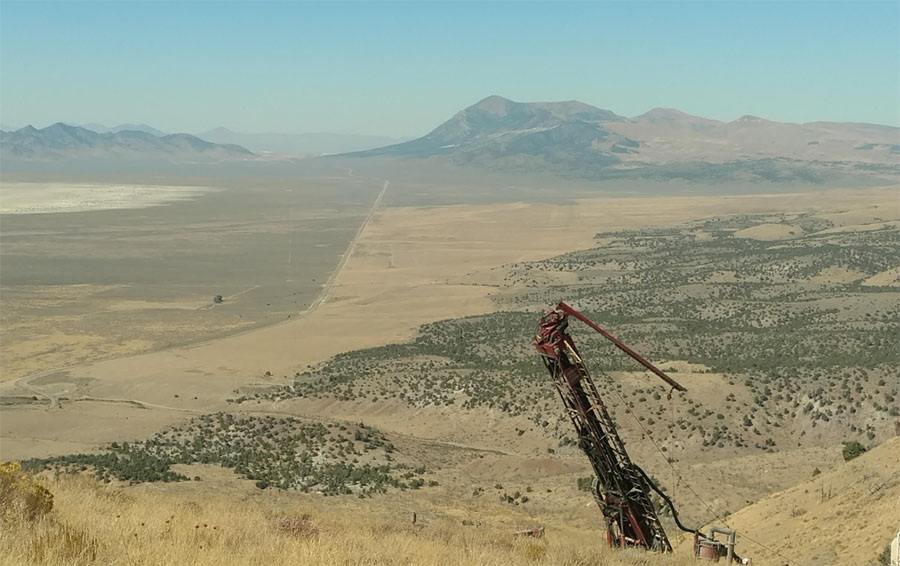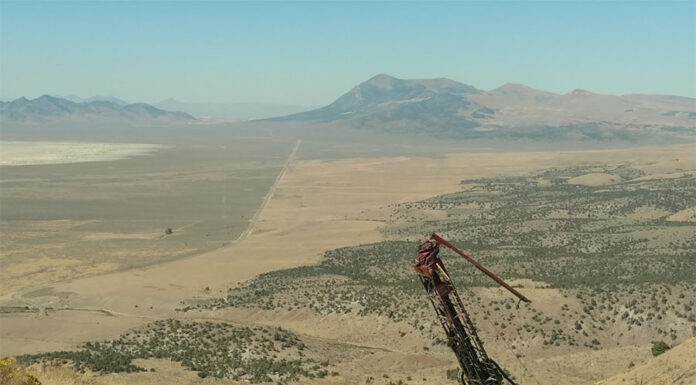
The Keystone Gold Project, located on the renowned Cortez Gold Trend in Nevada, is one of U.S. Gold Corp.’s (NASDAQ:USAU) most ambitious exploration project. Positioned within one of the most productive gold mining belts in the world, Keystone offers immense potential for discovering significant Carlin-type gold deposits. The project encompasses 20 square miles of highly prospective land, and although still in the exploratory phase, it has already generated considerable interest due to its promising geology and proximity to some of Nevada’s largest and most successful gold operations. As U.S. Gold Corp. continues to advance this project, Keystone could unlock major economic and geological opportunities, both for the company and for Nevada’s mining industry.
Nevada’s Cortez Gold Trend: A World-Class Mining District
The Cortez Gold Trend in Nevada is part of the larger Battle Mountain-Eureka Trend, one of the most productive and geologically favorable regions for gold mining in the U.S. Over the past 50 years, this area has yielded over 245 million ounces of gold, with major deposits being developed by industry giants such as Barrick Gold and Newmont Corporation. Keystone is located strategically between Barrick-Newmont’s massive Cortez Hills operation and McEwen Mining’s Gold Bar project.
Keystone’s location is a significant advantage, as the geology of the Cortez Trend has been well-documented, and its potential for further discoveries remains high. In this region, Carlin-type deposits are characterized by the presence of finely disseminated gold in sedimentary rocks. These deposits have low concentrations of gold by volume but are spread across large areas, making them economically viable when mined at scale.
Geological Characteristics and Exploration Potential
What sets Keystone apart is its largely under-explored status. Although multiple companies conducted drilling programs in the 1980s and early 2000s, much of the area remains geologically untested by modern methods. U.S. Gold Corp. has implemented an extensive exploration strategy designed to systematically unlock the region’s potential. This has included geological mapping, geochemical and geophysical surveys, and “scout” drilling programs aimed at identifying promising targets.
The geology of Keystone is highly complex, featuring a mix of lower-plate carbonate host rocks, intrusive systems, and extensive faulting, all of which are conducive to Carlin-type gold mineralization. The discovery of these favorable rock formations, similar to those found at the Cortez Hills and Goldrush deposits, has strengthened the case for a major gold system being present at Keystone.
U.S. Gold Corp.’s initial exploration efforts have yielded encouraging results. Soil and rock geochemistry surveys have revealed large areas with strong gold anomalies, along with elevated concentrations of pathfinder elements such as arsenic and mercury, which are typically associated with Carlin-type systems. Additionally, the company’s drilling campaigns have confirmed the presence of thick sequences of Devonian and Mississippian-aged host rocks, which are known to host significant gold deposits elsewhere in the Cortez Trend.
Systematic Exploration Approach and Challenges
Exploring a large, underdeveloped project like Keystone requires a methodical approach. U.S. Gold Corp. has prioritized gathering as much geological data as possible to refine its drilling targets. The company’s exploration team has conducted gravity and magnetic surveys to better understand the region’s subsurface structure, helping to pinpoint potential gold-bearing zones. In addition, extensive geochemical sampling has provided critical information about the distribution of gold and associated minerals within the project area.
Despite the promising early findings, challenges remain. Carlin-type deposits, while highly valuable, are notoriously difficult to locate due to the fact that the gold is often finely dispersed and hosted in low-grade ore. Furthermore, the extensive faulting and folding of the rocks in the region create complex geological conditions that require careful interpretation of drilling results. U.S. Gold Corp. must continue to fine-tune its exploration techniques and invest in advanced drilling programs to fully assess Keystone’s potential.
The Importance of Keystone in U.S. Gold Corp.’s Portfolio
Keystone plays a crucial role in U.S. Gold Corp.’s broader strategy of developing high-potential gold assets in mining-friendly jurisdictions. While the company’s CK Gold Project in Wyoming is further along in terms of development, Keystone represents the “blue sky” potential in the company’s portfolio. Should a major gold discovery be made at Keystone, it could significantly elevate U.S. Gold Corp.’s standing within the industry and attract the attention of larger mining companies looking to expand their resource base.
The proximity of Keystone to some of Nevada’s largest gold mines also makes it a valuable exploration asset. U.S. Gold Corp. has been strategically positioning itself in an area that has already proven to be highly productive for some of the world’s largest gold miners. If successful, Keystone could join the ranks of Nevada’s major gold producers, further solidifying the state’s status as the top gold-producing region in the U.S..
Environmental and Regulatory Considerations
As with any mining project, U.S. Gold Corp. must navigate the regulatory and environmental challenges associated with developing a large-scale operation in Nevada. Fortunately, Nevada’s regulatory framework is well-established and generally supportive of mining activities, particularly in regions like the Cortez Trend where mining has been a key economic driver for decades. U.S. Gold Corp. has committed to conducting its exploration activities in compliance with all state and federal regulations, ensuring that environmental impacts are minimized.
Keystone’s location in a historically mined region means that some of the infrastructure needed for future development, such as roads and utilities, is already in place. This reduces the project’s environmental footprint compared to operations in more remote locations. Additionally, U.S. Gold Corp. is focused on responsible resource management, including strategies for water conservation and waste reduction, which are critical in Nevada’s arid climate.
The Future Outlook for Keystone and Nevada Mining
As U.S. Gold Corp. continues to explore Keystone, the project’s future hinges on the results of its ongoing drilling programs. If the company can confirm the presence of a large, economically viable gold deposit, it would represent one of the most significant discoveries in recent years for the Cortez Trend. The increasing global demand for gold, driven by economic uncertainty and the rising cost of other commodities, has created favorable market conditions for new gold projects.
Nevada, as the leading gold-producing state in the U.S., stands to benefit from any new discoveries at Keystone. The state’s mining industry contributes billions to the economy each year, and the addition of another large gold project would further strengthen this sector.
The above references an opinion and is for information purposes only. It is not intended to be investment advice. Seek a licensed professional for investment advice. The author is not an insider or shareholder of any of the companies mentioned above.
The post Keystone Gold Project: How U.S. Gold Corp. Is Exploring New Frontiers in Nevada appeared first on MiningFeeds.






